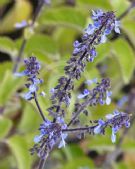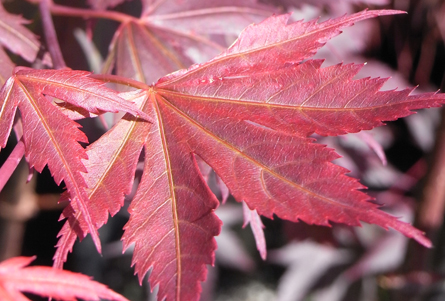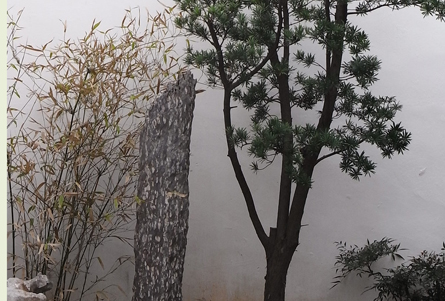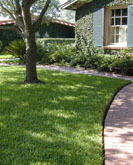oriental
getting oriental style
QUICK TIPS:
1. Screen away the outside world
2. Focus on different shades of green foliage
3. Choose trees with spring blossom or autumn colour
4. Avoid rows and evenly spaced planting
5. Avoid plants of the same size
6. Arrange plants in groups of an odd number
It takes a deep understanding of tradition to create a true oriental garden. But the lessons of eastern garden designs - especially their illusion of space - are useful in our ever-smaller urban gardens in the West.
The palette of Japanese and Chinese gardens is restrained. Materials are carefully balanced to recreate nature, although a highly controlled and stylised representation.
Waterfalls, ponds and streams are customary elements but water is sometimes represented in raked white gravel or dry stone creeks.
Stone also appears as steppers, water basins, bridges, lanterns and as carefully placed sculptures symbolising features of the natural world.
Woven bamboo is found in fences and screens, and gates are used as a frame for focal points and a connection between areas rather than a barrier. Pots are often glazed and designs based on crane, dragon or turtle motifs.
While Eastern gardens are enclosed to encourage introspection and reflection, they're also for living in. Changing and uneven levels, rough stepping stones and zigzag bridges are fun for kids but they're intended more as a Zen, adult experience. Movement is deliberately slowed, with the garden revealed in a progression of serene tableaux designed for contemplation or enjoyment from a pavilion, living area or other contrived locations.
The plants are precisely positioned and inseparable from the hard elements in oriental landscapes. Variety is limited - with almost no plants in a dry garden - but loaded with meaning. A plant is often repeated in seemingly random and asymmetric groups.
Subtle shades of green foliage - often dark and textured - set a calming backdrop although the passing seasons are marked with spring blossom, fragrant flowers and brilliant autumn colours. Evergreen shrubs screen away the outside world and draw attention toward focal points.
Plant form is important with an emphasis on weeping habits and trees and shrubs heavily sculpted or turned into bonsai. Different conifers, bamboos and mosses feature prominently.
For plants with a taste of the East, limit your search to "oriental" garden style section of the Plant This Plant Selector.
Comments (0)
Tell our Plant Selector what you want & like and we'll search thousands of plant profiles for compatible matches
Special Offers

Plant of the Day
Cockspur Flower
Plant type: herbaceous soft-wooded perennial
H: 0.3m W: 0.5m
Sunlight: hot overhead sun to dappled light

Fast Facts
oriental style
Waterfalls, ponds and streams are customary elements but water is sometimes represented in raked white gravel or dry stone creeks.
Recently added oriental articles
Most viewed oriental articles
Get the Plant Selector's full features plus news, forums & competitions. Sign up, it's free.
Click here for more











You must be a member to share: Login or Register